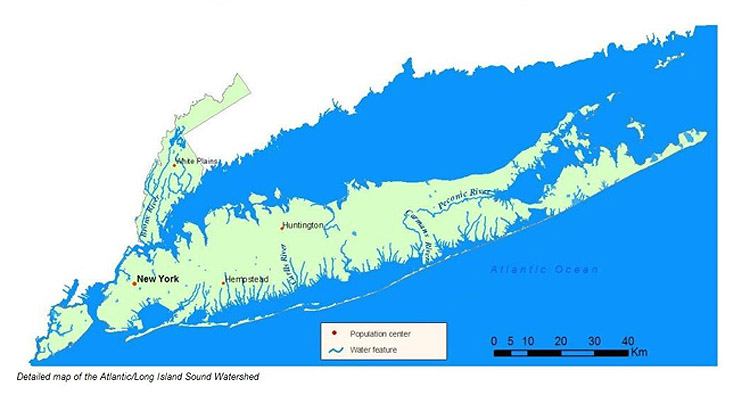2021/6/14
Watershed Report
With the Flow - New York State Watershed Report for the Week of June 14- 20
By Gillian Ward
Central Watersheds – Water Quality is Improving in Long Island Sound

EPA Region 2 reports improving water quality and fish habitat in Long Island Sound after intensive efforts to improve upstream wastewater management, a project several years in A University of Connecticut study found that 50 million tonnes of nitrates per year are successfully diverted from entering the environment, with results that are making New Yorkers smile.
WaterToday New York heard from John Senn, Public Affairs Specialist, in the New York City Regional Office of the EPA.
WTNY: How were upstream wastewater treatment systems modified to remove nitrogen?
EPA2: Nitrogen and phosphorus are the primary causes of cultural eutrophication (i.e., nutrient enrichment due to human activities) in surface waters. The most recognizable manifestations of this eutrophication are algal blooms that occur during the summer. Chronic symptoms of over-enrichment include low dissolved oxygen, fish kills, murky water, and depletion of desirable flora and fauna. In efforts to reduce the number of nutrient impairments, many point source dischargers have received more stringent effluent limits for nitrogen and phosphorus. To achieve these new, lower effluent limits, facilities have begun to look beyond traditional treatment technologies. Biological nutrient removal removes total nitrogen from wastewater through the use of microorganisms under different environmental conditions in the treatment process. Total effluent nitrogen comprises ammonia, nitrate, particulate organic nitrogen, and soluble organic nitrogen. The biological processes that primarily remove nitrogen are nitrification and denitrification. A simple fact sheet on the wastewater treatment process is available at: https://longislandsoundstudy.net/wp-content/uploads/2010/03/fact3.pdf
A more detailed EPA publication is available at https://www.epa.gov/nutrient-policy-data/biological-nutrient-removal-processes-and-costs.
But the simple takeaway is that to achieve biological nutrient removal, wastewater treatment plants often need to be expanded to have adequate capacity to create zones in the tanks with oxygen and without. This requires capital construction. There are also added pumps, mixers, and instruments needed to create and monitor the correct environment for bacteria within the treatment process.
WTNY: Is there more than one way to remove nitrogen from wastewater?
EPA2: There are many variations of designs to achieve biological nutrient removal. But because the underlying processes all relay on the same set of chemical reactions driven by the same groups of bacteria, the overall concepts follow similar principles.
WTNY: What would your team recommend to other watersheds in NYS, especially in areas with harmful algal blooms?
EPA2: The lesson from Long Island Sound is that progress on challenging environmental problems can be achieved. Combating excess nutrients in our waterways can succeed. We have the technology and science. It requires adequate investment in pollution treatment, adherence to science, commitment by government and support by the public. Our waterways can recover with time if we take the necessary actions.
And here are the two web pages for the University of Connecticut researchers that authored the report mentioned in our press release.
https://marinesciences.uconn.edu/person/penny-vlahos/#
https://marinesciences.uconn.edu/person/michael-whitney/
|